The Celebrations of Life at Mexico’s Día de los Muertos
When the vibrant and colorful traditions of Mexico’s Día de los Muertos come to life, it’s as if a burst of joy and remembrance explodes into the air. This celebration, deeply rooted in Mexican culture, is a beautiful tapestry of honoring deceased loved ones with elaborate altars, marigolds, sugar skulls, and joyful gatherings. It’s a time when death is not feared but embraced as a natural part of the cycle of life.
As the festivities unfold, the air is filled with the sweet aroma of marigolds, guiding the spirits of the departed back to the world of the living. The construction of ofrendas, adorned with photographs, favorite foods, candles, and marigolds, serves as a bridge between the realms of the living and the dead. It’s a moment of connection, a celebration of the eternal bond between generations.
The artistry of calaveras and Catrinas adds a whimsical touch to the solemnity of the occasion. These playful representations of skulls and elegant skeletons reflect the Mexican approach to death – one that is filled with humor, satire, and a profound understanding of the cycle of life and death.
Joining the lively parades and festive gatherings during Día de los Muertos is like stepping into a world where music, dance, and elaborate costumes blend seamlessly with heartfelt remembrances. It’s a time to celebrate life, to honor the memories of those who have passed, and to embrace the beauty of cultural traditions that have withstood the test of time.
From the traditional pan de muerto to the iconic Mexican hot chocolate, the culinary delights of Día de los Muertos offer a sensory feast that delights both the living and the dead. The flavors, the textures, the aromas – all come together to create a symphony of tastes that pay homage to the richness of Mexican heritage.
As Día de los Muertos gains international recognition and influences popular culture around the world, its essence remains deeply rooted in the hearts of the Mexican people. It’s a celebration that transcends borders, uniting people in a shared appreciation for life, death, and the enduring power of memory.
Exploring modern interpretations and adaptations of Día de los Muertos reveals a dynamic fusion of tradition and innovation. Artists and communities are reimagining age-old practices, infusing them with contemporary themes and expressions that resonate with a new generation of celebrants.
Origins and Significance
Exploring the vibrant and colorful traditions of Mexico’s Día de los Muertos, a celebration that honors deceased loved ones with elaborate altars, marigolds, sugar skulls, and joyful gatherings.
Día de los Muertos, or Day of the Dead, has deep roots in Mexican culture, blending ancient indigenous traditions with Catholic influences. This unique celebration is a time when families come together to honor and remember their departed loved ones. The origins of Día de los Muertos can be traced back to pre-Columbian times when rituals were held to pay homage to the deceased. Over time, these rituals evolved and merged with Catholic traditions brought by Spanish colonizers, resulting in the vibrant and colorful festival we know today.
Altars and Offerings
When delving into the rich tapestry of Mexico’s Día de los Muertos, one cannot overlook the profound significance of altars and offerings in this vibrant celebration. These ofrendas, meticulously constructed with love and care, serve as portals for the spirits of the departed to return and partake in the festivities of the living.
Each altar is a personalized tribute, adorned with photographs of the deceased, their favorite foods, and cherished possessions. Candles flicker in the dimly lit rooms, guiding the way for souls to find their way back home. Marigolds, known as the flower of the dead, are scattered around the altar, their vibrant hues and pungent aroma believed to attract and guide the spirits with their mystical allure.
Symbolism reigns supreme in every detail of these altars. The flickering flames symbolize the eternal flame of remembrance, never to be extinguished. The aroma of copal incense wafts through the air, a fragrant offering to the departed. Food and drinks placed on the altar not only nourish the spirits but also serve as a gesture of hospitality and love.
As families gather around these altars, stories of the departed are shared, memories are cherished, and laughter mingles with tears. It is a time of reflection, of honoring the past, and embracing the present. The altars stand as a testament to the enduring bond between the living and the dead, a bridge between two worlds that converge in a moment of shared love and remembrance.
Symbolism of Marigolds
Marigolds hold a significant symbolic role in the vibrant tapestry of Mexico’s Día de los Muertos celebration. These vivid flowers, known as cempasúchil in Spanish, play a crucial part in guiding the spirits of the departed to the ofrendas, or altars, prepared in their honor. The bright orange and yellow hues of marigolds are believed to represent the sun, leading the deceased back to the world of the living during this special time of remembrance and reunion.
Traditional Foods and Drinks
When it comes to celebrating Día de los Muertos in Mexico, one cannot overlook the rich tapestry of traditional foods and drinks that play a significant role in honoring the departed souls. This festive occasion is marked by a variety of culinary delights that hold special symbolic meaning and are enjoyed by families and friends as they come together to remember their loved ones.
One of the most iconic treats associated with Día de los Muertos is the pan de muerto, or the “bread of the dead.” This sweet bread, often adorned with bone-shaped decorations, is a staple during the celebrations. Its round shape symbolizes the circle of life and the cyclical nature of existence, making it a fitting addition to the altars dedicated to the departed.
Another popular delicacy that graces the ofrendas is the sugar skull, intricately decorated with colorful icing and often personalized with the names of the deceased. These sweet confections are not only visually stunning but also serve as a reminder of the ephemeral nature of life, encouraging reflection on mortality amidst the festivities.
For those craving savory delights, tamales are a customary dish enjoyed during Día de los Muertos. These steamed parcels of masa filled with various fillings, such as meats, cheeses, or chilies, are a comforting and hearty addition to the commemorative feasts shared among families and communities.
No celebration in Mexico is complete without the indulgence of Mexican hot chocolate, a rich and decadent beverage that warms both the body and soul. Served alongside the traditional foods, this velvety drink enhances the sense of togetherness and comfort that permeates the gatherings during Día de los Muertos.
Calaveras and Catrinas
When it comes to the vibrant and colorful traditions of Mexico’s Día de los Muertos, one cannot overlook the captivating artistry of calaveras and Catrinas. These iconic symbols play a significant role in the imagery and spirit of the celebration, offering a unique perspective on the concept of death in Mexican culture.
Calaveras, meaning skulls in Spanish, are intricately designed to showcase a blend of beauty and mortality. They are often adorned with colorful decorations, intricate patterns, and sometimes even personalized with the names of loved ones. These skulls symbolize the cycle of life and death, reminding us of the ephemeral nature of existence.
On the other hand, Catrinas are elegant and stylish skeletons, often depicted wearing elaborate hats and dresses. These figures, originally created by Mexican artist José Guadalupe Posada, represent a satirical take on death, showcasing that even in the face of mortality, there is room for humor and celebration.
During Día de los Muertos, both calaveras and Catrinas can be found in various forms, from traditional sugar skulls crafted from sugar and decorated with colorful icing to elaborate costumes worn by revelers during parades and festivities. Their presence adds a touch of whimsy and artistry to the celebration, highlighting the Mexican approach to death as a natural part of life.
Parades and Festivities
During Día de los Muertos, the streets of Mexico come alive with vibrant parades and lively festivities that capture the essence of this joyous celebration. The parades are a colorful spectacle, filled with music, dance, and elaborate costumes that pay homage to the traditions and customs of the holiday. Participants don elaborate skull masks and costumes, adding a playful and theatrical element to the proceedings.
One of the most iconic features of these parades is the presence of giant puppets known as “mojigangas,” towering figures that dance through the streets, captivating onlookers with their larger-than-life presence. These mojigangas often depict skeletons and other whimsical characters, adding a touch of whimsy to the festive atmosphere.
As the parades wind their way through the streets, spectators are treated to a sensory feast of sights and sounds. Musicians play lively tunes on traditional instruments, while dancers perform intricate routines that reflect the rich cultural heritage of Mexico. The air is filled with the scent of incense and marigolds, creating a heady and intoxicating ambiance that is truly unique to Día de los Muertos.
Global Recognition and Influence
The vibrant and colorful traditions of Mexico’s Día de los Muertos have transcended borders, gaining widespread recognition and influencing various aspects of global culture. This annual celebration, with its rich tapestry of rituals and symbolism, has captured the imagination of people worldwide, sparking interest and appreciation for Mexican heritage and traditions. Through art, cinema, literature, and even fashion, Día de los Muertos has left an indelible mark on the global cultural landscape, serving as a source of inspiration for artists and creators across the globe.
The iconic imagery associated with Día de los Muertos, such as sugar skulls, marigolds, and calaveras, has become synonymous with the holiday and is often incorporated into diverse art forms. From intricate sugar skull designs adorning clothing and accessories to elaborate altars displayed in museums and galleries, the visual elements of this celebration have found their way into mainstream culture, captivating audiences with their beauty and symbolism.
Furthermore, the festive spirit and sense of community fostered during Día de los Muertos have inspired numerous events and celebrations in different parts of the world. Communities outside Mexico now organize their own Day of the Dead festivities, complete with parades, music, and traditional offerings, showcasing the global appeal and adaptability of this cherished tradition. These gatherings serve as a testament to the universal themes of remembrance, love, and honoring the departed that resonate with people of diverse backgrounds.
As Día de los Muertos continues to garner international attention, its influence on popular culture shows no signs of waning. From Hollywood films featuring Day of the Dead themes to high-end fashion collections drawing inspiration from Mexican folklore, the reach of this cultural phenomenon extends far beyond its origins. Through a fusion of tradition and innovation, Día de los Muertos remains a dynamic and evolving celebration that bridges the past and the present, uniting people from all walks of life in a shared appreciation for life, death, and the enduring power of memory.
Contemporary Interpretations
Contemporary interpretations of Día de los Muertos have seen a fascinating evolution as artists and communities infuse traditional practices with modern themes and expressions. This blending of old and new creates a dynamic tapestry of creativity that reflects the changing cultural landscape.
One notable contemporary trend is the incorporation of technology into Día de los Muertos celebrations. Artists use digital media, such as projections and interactive installations, to add a futuristic twist to the traditional festivities. This innovative approach breathes new life into age-old customs, captivating audiences with its blend of the past and the present.
Furthermore, some artists have taken a more political stance with their interpretations of Día de los Muertos, using the occasion to address social issues and advocate for change. Through their artwork, they challenge conventions and provoke thought, sparking important conversations about identity, heritage, and society.
Another modern adaptation of Día de los Muertos is the fusion of diverse cultural influences. In an increasingly globalized world, artists draw inspiration from a variety of traditions and perspectives, creating a rich tapestry of artistic expression that transcends borders. This cross-cultural pollination adds depth and complexity to the celebration, highlighting the interconnectedness of human experience.
Frequently Asked Questions
- What is Día de los Muertos?
Día de los Muertos, or Day of the Dead, is a traditional Mexican holiday that honors deceased loved ones and celebrates their lives.
- When is Día de los Muertos celebrated?
Día de los Muertos is celebrated annually on November 1st and 2nd, coinciding with the Catholic holidays of All Saints’ Day and All Souls’ Day.
- What is the significance of marigolds in Día de los Muertos?
Marigolds are believed to guide the spirits of the deceased to the altars with their vibrant colors and strong fragrance, symbolizing remembrance and celebration.
- What are ofrendas?
Ofrendas are altars constructed to honor the deceased, adorned with photographs, favorite foods, candles, and marigolds to welcome spirits back to the world of the living during Día de los Muertos.
- What are some traditional foods associated with Día de los Muertos?
Traditional foods include pan de muerto (bread of the dead), sugar skulls, tamales, and Mexican hot chocolate, all prepared as offerings for the departed loved ones.
- How has Día de los Muertos influenced popular culture?
Día de los Muertos has gained international recognition and influenced art, films, and celebrations worldwide, inspiring diverse interpretations and adaptations of the traditional holiday.
Day of the Dead, Altars, Offerings, Mariachi, Skulls, Marigolds, Calaveras, Skeletons, , Day of the Dead, Altars, Offerings, Mariachi, Skulls, Marigolds, Calaveras, Skeletons,
Share this content:

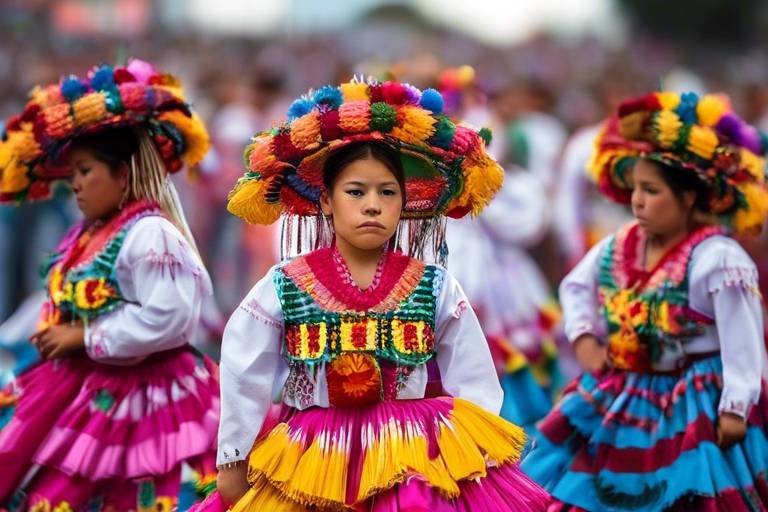





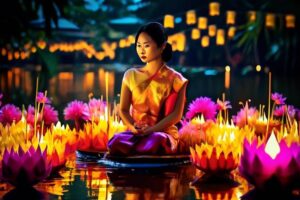
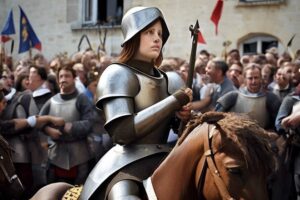
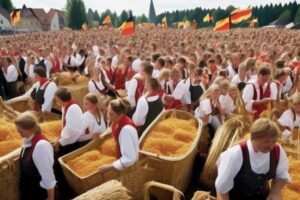
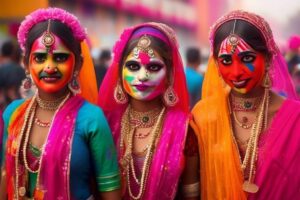

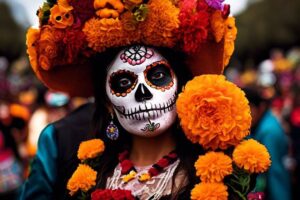

Post Comment